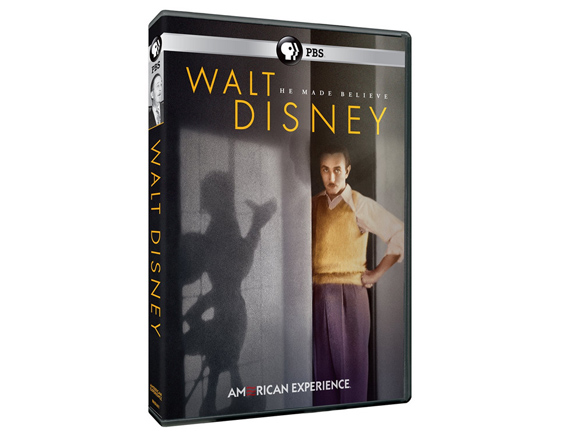Walt Disney was born in 1901 and even though he is no longer with us his artistic legacy is still very much alive. In September PBS aired "American Experience: Walt Disney," a film biography about this amazing storyteller who once said "I only hope that we never lose sight of one thing—that it was all started by a mouse."
Walt Disney was born in 1901 and even though he is no longer with us his artistic legacy is still very much alive. In September PBS aired "American Experience: Walt Disney," a film biography about this amazing storyteller who once said "I only hope that we never lose sight of one thing—that it was all started by a mouse."
Disney served in WWI, but wasn't sure about what he wanted to do when he returned home. A master storyteller who loved to draw, he eventually decided to create his own animation studio. It was a modest endeavor and his first cartoon character was a rabbit named Oswald. He sold a series of cartoons based on Oswald to a distributor and they were quite popular.
Unfortunately the distributor, not Disney, owned the legal rights to the Oswald character. After the first batch of cartoons were purchased the distributor decided to produce the Oswald cartoons without Disney. This came as a complete shock to the naive young artist. Disney was disillusioned, but he didn't quit.
Instead he and fellow artist Ub Iwerks created another cartoon character. Using the basic body of Oswald they shortened his ears, lengthened his nose and turned Oswald into a mouse. Disney wanted to call him Mortimer, but his wife Lillian didn't like that name. She suggested calling the little guy Mickey. That name stuck and an animated icon was born.
In 1928, Disney added synchronized sound to "Steamboat Willie," his first Mickey Mouse cartoon. He also became Mickey's voice. The cartoon was an instant success with audiences. They applauded and often requested that the cartoon be repeated more than once. Throughout his life Walt identified with Mickey, who was his alter ego. Mickey, like his animator, was able to smile and carry on in the face of adversity and in the end things always worked out well for both of them.
Disney was an innovator who continued to dream, imagine and create new ideas and concepts until the day he died. He had artistic ability, but his greatest talent was as a storyteller who was able to fill his staff with enthusiasm. Now, almost 50 years after his passing in 1966, the Disney Studio remains a bastion of magical, inspiring family entertainment.
Born in Chicago, Disney grew up in both rural Marceline, Mo. and urban Kansas City. Most of his early upbringing mirrored the values of the great American Midwest. He also came from a big family so he instinctively knew what Americans wanted in the way of wholesome entertainment.
In 1932, the Disney Studio created "Flowers and Trees," the first color animation in history, and it received the first Academy Award given to a cartoon. This was eventually followed by "Snow White," the first full-length animated film. Unlike most animated works, "Snow White" was a full-length story that not only made you laugh, it also made you cry. Then came "Pinocchio," "Bambi," "Dumbo" and "Fantasia." Disney films were not just animated cartoons, they were masterful works of art
"Snow White" was a worldwide phenomenon and a major financial success for the studio, but subsequent films like "Pinocchio" did not fare as well at the box office due to the war. The conflict ended the opportunity for worldwide distribution. This put a greater burden on the studio, but Roy Disney was able to keep their enterprise from going under. While Walt was the creative force, it was Roy who worked tirelessly behind the scenes to keep the studio financially stable during times of crisis..
On July 17, 1955, Disneyland opened with complete television coverage on ABC-TV. Walt wanted to create an amusement park that would thrill families with castles, a frontier land and magical attractions like flying Dumbos and swirling teacups you could ride in. Then in 1963, Walt and Roy purchased 27,443 acres of land in Florida, the future site of Walt Disney World, for $5 million.
The PBS "Walt Disney" bio brings all these events to vivid life with film footage and commentary by Disney biographers and film historians who paint a full portrait of the man who loved people and wanted to be called Walt, not Mr. Disney. He loved his family, but could be a hard taskmaster. He was a man driven by a passion for perfection and expected that same drive and devotion from his staff. Along with Disney's unimaginable triumphs, there were failures, strikes and difficult times. He sought perfection in his work and in his life, but under stress he smoked too much and drank too much.
Nov. 23, 1966 was the last day Walt spent at the studio. On Dec. 15, 1966, Walt Disney died at St. Joseph's Hospital, across the street from the Walt Disney Studios. His brother Roy was with him as Walt talked about his next dream project, EPCOT, a prototype for the city of tomorrow. Everything comes to life in this fascinating PBS biography about a man who built his kingdom on a mouse.


















